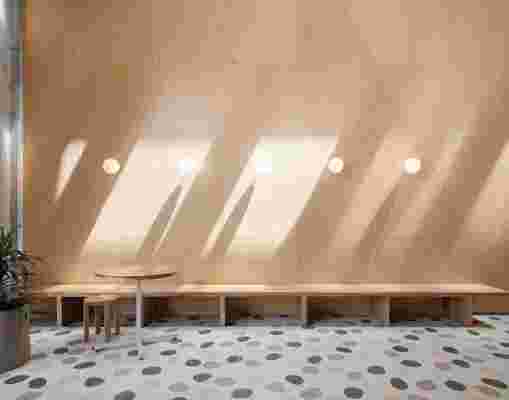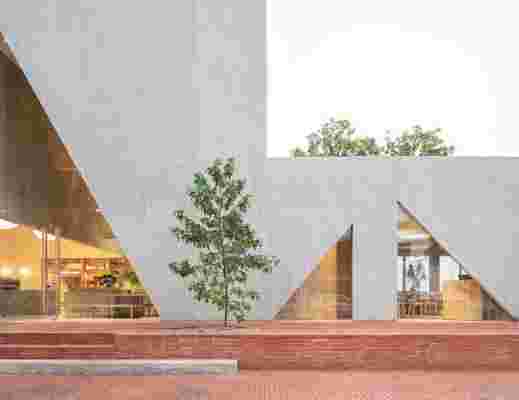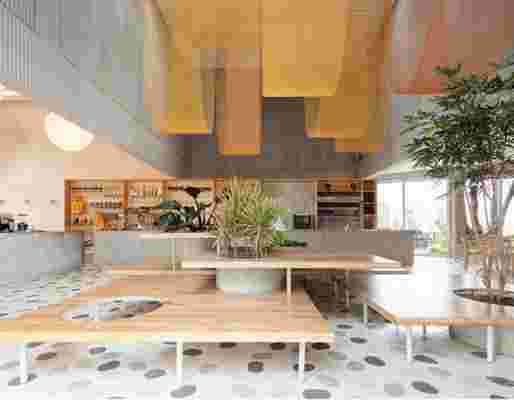The Clever editors are experts at dining out. What can we say—sometimes we just don't feel like dealing with the finicky stoves and minuscule countertop space in our tiny New York City kitchens . Countless reservations later, we've experienced firsthand the popular notion that enjoying yourself at a restaurant is just as much about the atmosphere as it is the food. So true. Knowing this, we can bet the new Bogotá, Colombia, restaurant Masa , with its terrazzo-on-terrazzo floors and sunshine-yellow mesh panels swooping down from the ceiling, is a great time. Studio Cadena is behind the design, which is essentially one great idea layered on top of another. We talked to founder and principal Benjamin Cadena about our five favorite takeaways—yes, it's possible to recreate these at home!
Look closely and you'll see that Masa's spotted floor is essentially a supersize terrazzo embedded in a regular terrazzo base. Meta. "We really wanted to play with something that was familiar as a material but could achieve a very distinct scale and look that would be unique to the space," Benjamin explains. Studio Cadena premade the large fragments out of the same concrete-and-marble-dust mix as any terrazzo, then hand-polished each one to get the perfect round shape. From there, the studio cast the pieces onto the base (a traditional terrazzo in this case), then polished everything together.

Terrazzo times two.
"The triangle windows resulted in a more distinct and memorable façade while maximizing openness to the street at ground level," says Benjamin. You'd think that they were just a stroke of creative genius, but practicality actually led to their design."It was precisely because we couldn't afford any custom systems that the triangular openings made even more sense at that scale," he says. Insetting the glass in the inside edges of the concrete walls required only off-the-shelf components.

Masa makes a good first impression.
"A few years ago I made a proposal for a temporary installation that used painted mesh to create a diaphanous effect and tested some material ideas then," Benjamin remembers. "It was a perfect fit for this space as it is visually present and changes in the light without closing up the triple height volume of the room. The mesh was a standard industrial-grade expanded metal that we roll-painted by hand and then hung on steel tube bars that we suspended from the ceiling."

Always remember to look up.
At Masa, the concrete walls, cast in place with a corrugated texture, do triple duty. "The idea was to make a wall that, with minimal effort, would serve as an envelope, be the structure, and give the building its character," says Benjamin. "From the outside, the texture changes dramatically throughout the day depending on the shadows being cast by the sun, while on the inside, it helps break down these large surfaces to a more human scale and helps to diffuse reflected sound."
Concrete never looked so cozy.
Potted plants are all good, but in the middle of the restaurant, a variety of shade-loving plants grow directly out of the floor . "They still get plenty of direct sunlight from the circular skylight, as Bogotá is close to the equator and sunlight always streams in from above. The opening on the floor goes directly through the concrete slab so the soil goes quite deep," says Benjamin.
Benjamin told us the greenery is "an attempt to intensify the feeling of being outdoors by extending the garden indoors."
